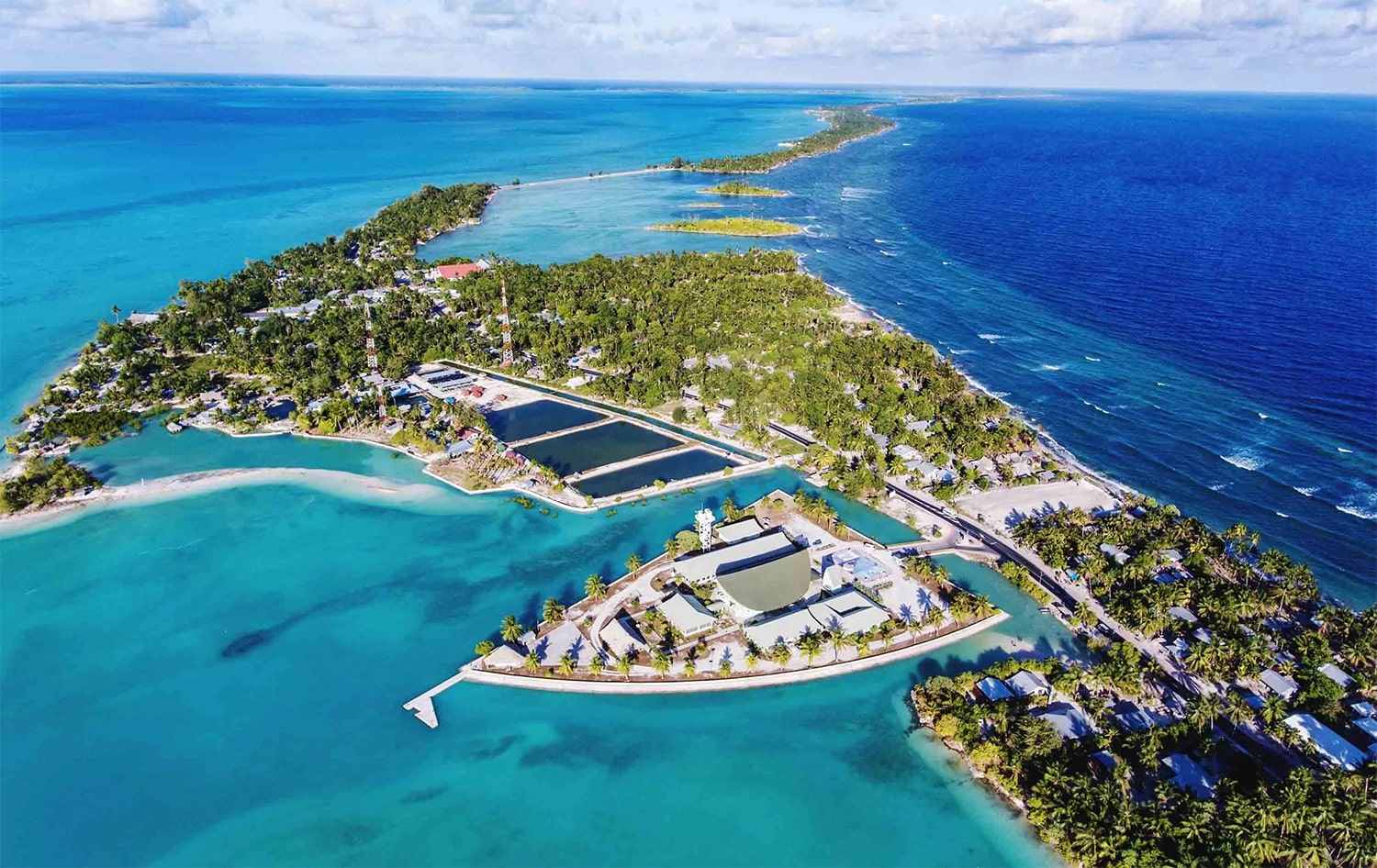
36 interesting facts about Kiribati
- 👁️ 289
Kiribati, a sovereign state in the central Pacific Ocean, is an archipelago of 33 atolls and reef islands, along with one raised coral island. It’s a place where the past and present merge, offering a unique blend of culture, history, and natural beauty. Spread over 3.5 million square kilometers of ocean, Kiribati is known for its sprawling marine biodiversity, vibrant traditions, and the challenges it faces due to climate change. Despite its remote location, Kiribati is a nation rich in spirit and community, drawing interest from around the world for its resilience and unique way of life. Here are 36 interesting and informative facts about Kiribati that highlight its distinctiveness among the nations of the world.
- Kiribati was formerly known as the Gilbert Islands, a name given by British explorers.
- The country gained independence from the United Kingdom on July 12, 1979.
- Kiribati is composed of 33 atolls and one solitary island, dispersed over three main groups: the Gilbert Islands, the Phoenix Islands, and the Line Islands.
- It is one of the most widespread nations on the planet, extending into all four hemispheres.
- Kiribati became the first country to enter into the new millennium on January 1, 2000.
- The capital of Kiribati, South Tarawa, is situated on Tarawa atoll.
- Kiribati has a population of about 110,000 people, most of whom are of Micronesian descent.
- The nation’s economy is mainly supported by fishing, agriculture, and remittances from seafarers.
- Kiribati has one of the largest Exclusive Economic Zones (EEZ) in the world, covering over 3.5 million square kilometers of ocean.
- Climate change poses a significant threat to Kiribati due to sea-level rise, with some predictions suggesting parts of the islands could become uninhabitable within the century.
- The Phoenix Islands Protected Area (PIPA) in Kiribati is one of the largest marine protected areas in the world.
- Banaba Island, also known as Ocean Island, is the only raised coral island in Kiribati and was heavily mined for phosphate in the 20th century.
- Kiribati’s flag features a frigate bird flying over a rising sun and the ocean, symbolizing freedom and the country’s location across the equator.
- The native language is I-Kiribati, and English is also an official language.
- Kiribati’s culture includes a rich tradition of songs, dances, and handicrafts.
- The traditional sport of Kiribati is Te Ano, resembling a form of volleyball using two balls made from pandanus leaves.
- Christmas Island, now known as Kiritimati Island, is the world’s largest coral atoll and part of Kiribati.
- The majority of Kiribati’s population practices Christianity, predominantly the Roman Catholic and Kiribati Protestant Church.
- Kiritimati Island accounts for almost half of the land area of Kiribati.
- Kiribati has no rivers or streams, making freshwater a precious resource.
- The islands are known for their significant World War II history, including the Battle of Tarawa.
- The Micronesian Navigator was declared a national hero for his contributions to rekindling traditional navigation methods.
- Kiribati is threatened by overfishing, which impacts its vital marine resources.
- The government of Kiribati purchased land in Fiji as a potential relocation site for its people due to rising sea levels.
- Traditional Kiribati houses, called bwia, are made from pandanus leaves and coconut wood.
- Kiribati is part of the Pacific Remote Islands Marine National Monument, one of the largest marine conservation areas in the world.
- The country’s name is pronounced “Kiribas,” with the “ti” sounding like an “s.”
- Despite its vast EEZ, Kiribati remains one of the least developed countries in the world.
- The Gilbert Islands were named after British captain Thomas Gilbert, who encountered the islands in 1788.
- The islands were a British protectorate before becoming part of the Gilbert and Ellice Islands colony in 1916.
- Kiribati has a unique practice of land ownership, with land passed down through female lineage.
- The equator cuts through the southern part of the Tarawa atoll.
- Kiribati’s national bird is the bokikokiko, or the Kiribati warbler.
- The country has one of the highest rates of population density in the Pacific.
- Copra (dried coconut meat) and fish represent Kiribati’s main exports.
- The Matang (taboo) system in Kiribati is a traditional practice of conservation that involves prohibiting the use of certain areas of the ocean to allow marine life to regenerate.
Kiribati is a nation of incredible resilience, rich cultural heritage, and natural beauty, facing unprecedented challenges in the modern world. Its diverse ecosystems, traditional ways of life, and strategic initiatives for conservation and adaptation make it a unique subject of global interest. The spirit of the I-Kiribati people, along with their efforts to preserve their homeland and culture against the backdrop of climate change, serves as a powerful testament to the enduring human spirit. Understanding Kiribati offers valuable lessons on sustainability, resilience, and the importance of global cooperation in addressing climate change.
Kiribati, a sovereign state in the central Pacific Ocean, is an archipelago of 33 atolls and reef islands, along with one raised coral island. It’s a place where the past and present merge, offering a unique blend of culture, history, and natural beauty. Spread over 3.5 million square kilometers of…